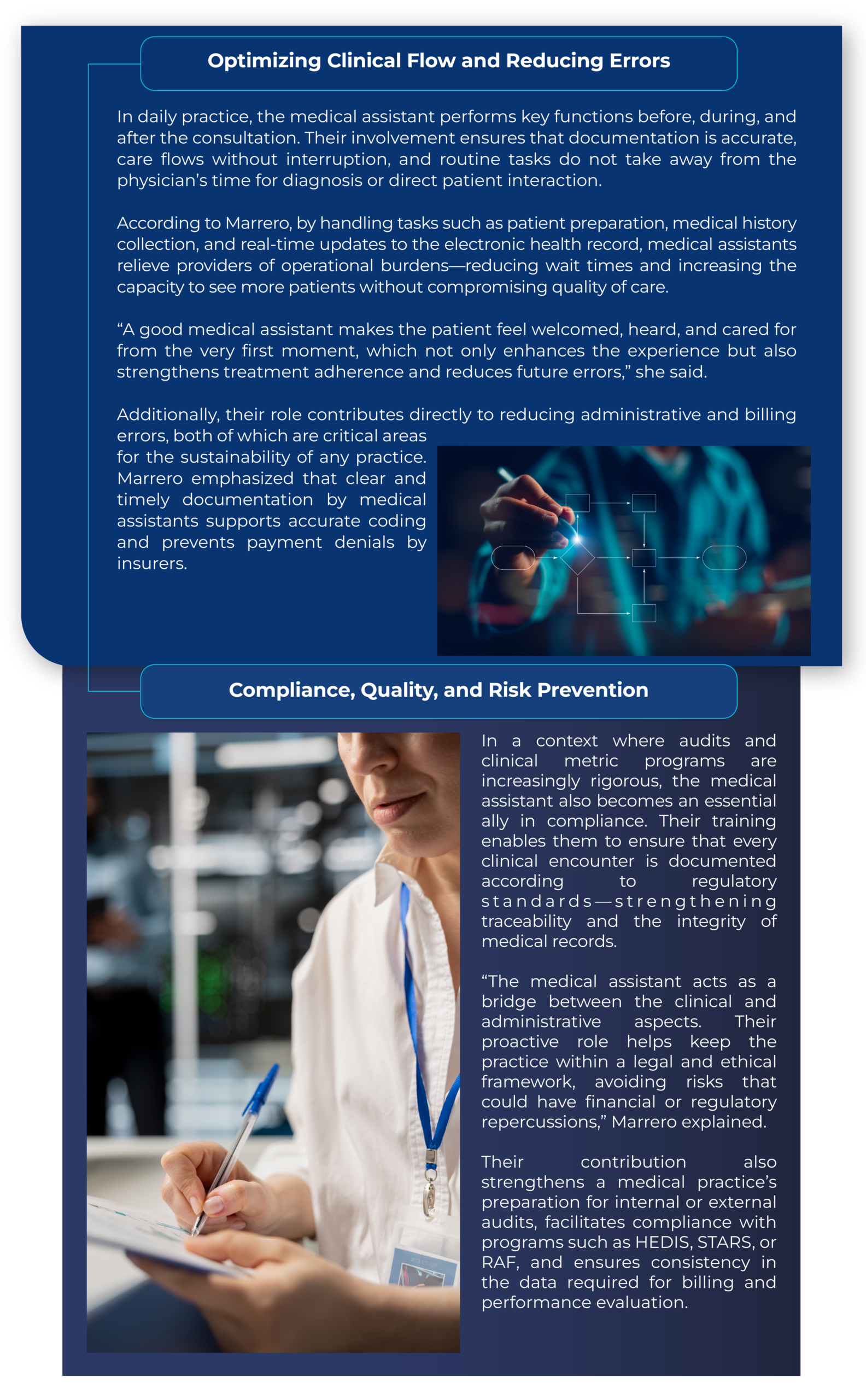This post is also available in:
 Español (Spanish)
Español (Spanish)
Redacted by Vilmar Trinta | Contributed by Keila K. Marrero, Clinical Affairs and Strategic Consulting
In a clinical environment where physicians face increasing pressure to see more patients, document accurately, and comply with increasingly complex regulations, having a well-trained and integrated medical assistant is no longer an operational luxury—it is a strategic necessity.
As explained by Keila K. Marrero, Clinical Affairs & Strategic Consulting at Provider Network Solutions, “The medical assistant is much more than administrative support; they are the axis that keeps the daily operations of an efficient, human, and well-coordinated medical practice running smoothly.”
In current models of care, the medical assistant fulfills a dual and essential role—clinical and administrative. Marrero pointed out that, on the clinical side, their work includes taking vital signs, preparing the patient for consultation, and assisting the physician with minor procedures or basic diagnostic tests. On the administrative side, their contribution is reflected in managing appointments, coding, coordinating referrals, and updating medical records.
“That balance between the clinical and administrative functions makes the medical assistant a versatile and indispensable professional for the proper operation of any practice,” she affirmed.
From a strategic consulting perspective, Marrero emphasized that their role directly aligns with the goals of operational efficiency, compliance, and patient experience, as it allows optimization of the physician’s clinical time, improves patient communication, and ensures the practice remains compliant with quality standards and performance metrics.
“Their presence not only optimizes the operational flow of the practice but also raises the overall level of functionality, enabling a more structured, efficient, and human approach to patient care,” she noted.

Building Trust and Humanizing Care
Beyond efficiency, Marrero stressed that the medical assistant plays a decisive role in building patient trust. “The trust between a patient and a medical assistant is not optional; it is essential for safe, effective, and sustainable care,” she asserted. 
Their direct and constant contact with patients allows them to establish empathetic and communicative bonds that directly influence patients’ perception of service quality. This relationship of trust promotes treatment adherence, reduces repeat visits, and improves clinical outcomes.
“When a patient trusts their medical assistant, they share more information, feel accompanied and understood—and that directly impacts satisfaction indicators and population health outcomes,” Marrero added.
An Evolving Role
 Looking ahead, Marrero projects that the role of the medical assistant will continue to evolve as healthcare moves toward value-based and technology-driven models. “Artificial intelligence, automation, and electronic health records will not replace medical assistants; on the contrary, they will enhance their ability to focus on high-value clinical and human tasks,” she stated.
Looking ahead, Marrero projects that the role of the medical assistant will continue to evolve as healthcare moves toward value-based and technology-driven models. “Artificial intelligence, automation, and electronic health records will not replace medical assistants; on the contrary, they will enhance their ability to focus on high-value clinical and human tasks,” she stated.
These tools will allow medical assistants to dedicate more time to patient education, chronic condition management, and care coordination—areas that are increasingly essential for improving clinical and contractual outcomes.
For Marrero, strengthening the medical assistant’s role depends on continuous training, integration into multidisciplinary teams, and institutional recognition of their operational impact.
“By enhancing both their technical and interpersonal skills, medical assistants can become a driving force for efficiency, compliance, and patient satisfaction within any modern medical practice,” she concluded.
This post is also available in:
 Español (Spanish)
Español (Spanish)








